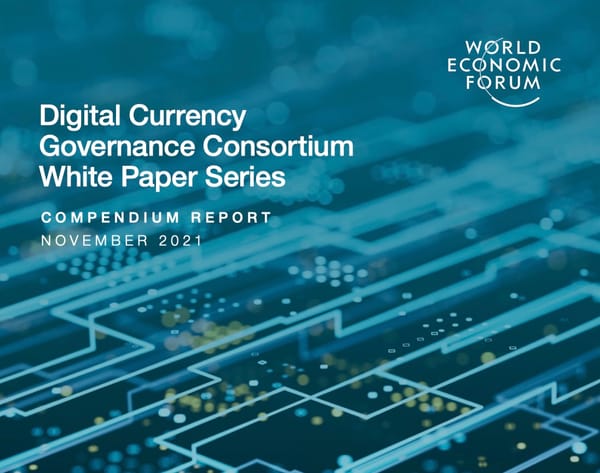Source / Author: World Economic Forum (WEF)
Publication Date: November 2021
Document with my annotations:
Focus:
The World Economic Forum’s Digital Currency Governance Consortium (DCGC) white paper series outlines policy and governance frameworks for the responsible design and deployment of digital currencies, including stablecoins and central bank digital currencies (CBDCs). The papers consolidate perspectives from over 80 institutions—spanning central banks, regulators, private sector participants, and academia—to shape global standards that balance innovation, financial stability, and inclusion.
⸻
Key Insights
• Digital currencies are accelerating financial transformation, but lack globally consistent definitions and regulatory frameworks—creating fragmentation risks.
• The report identifies four categories of digital currencies: central bank–issued (CBDCs), bank-issued, non-bank fiat-backed (e.g., stablecoins), and crypto-backed tokens—each with distinct governance implications.
• Key regulatory priorities include consumer protection, AML/CFT compliance, reserve transparency, and interoperability with existing payment systems.
• Public–private collaboration is essential: effective digital currency regulation requires dialogue between policymakers, central banks, and private issuers.
• The WEF advocates a principles-based approach focusing on outcomes—financial stability, integrity, and inclusion—rather than prescriptive technology-specific rules.
• The white paper emphasizes global interoperability as critical to cross-border efficiency, recommending standards for settlement finality, data privacy, and identity frameworks.
⸻
Notable Figures
• Participating institutions: 80+ (including BIS, IMF, ECB, MAS, and private-sector firms)
• Core policy pillars: Integrity, Stability, Inclusion, Innovation
• Governance models analyzed: CBDC, hybrid, and fully private frameworks
• Global unbanked adults (2021): 1.7 billion — key demographic for inclusion-driven design
⸻
Analyst Take
The WEF’s DCGC series remains a cornerstone in the institutional debate on how to govern digital money safely at scale. It provides a conceptual bridge between central banks and fintech innovators, highlighting that no single digital currency model fits all jurisdictions. By focusing on governance, not technology, the paper set the stage for today’s convergence of CBDCs, stablecoins, and tokenized deposits under unified regulatory principles. For market participants and policymakers alike, it anticipates the frameworks now guiding digital asset adoption within the IMF, BIS, and G20 agendas.
⸻
Citation:
Source: World Economic Forum, “Digital Currency Governance Consortium White Paper Series — Pathways to the Regulation of Digital Currencies,” November 2021. https://www.weforum.org

